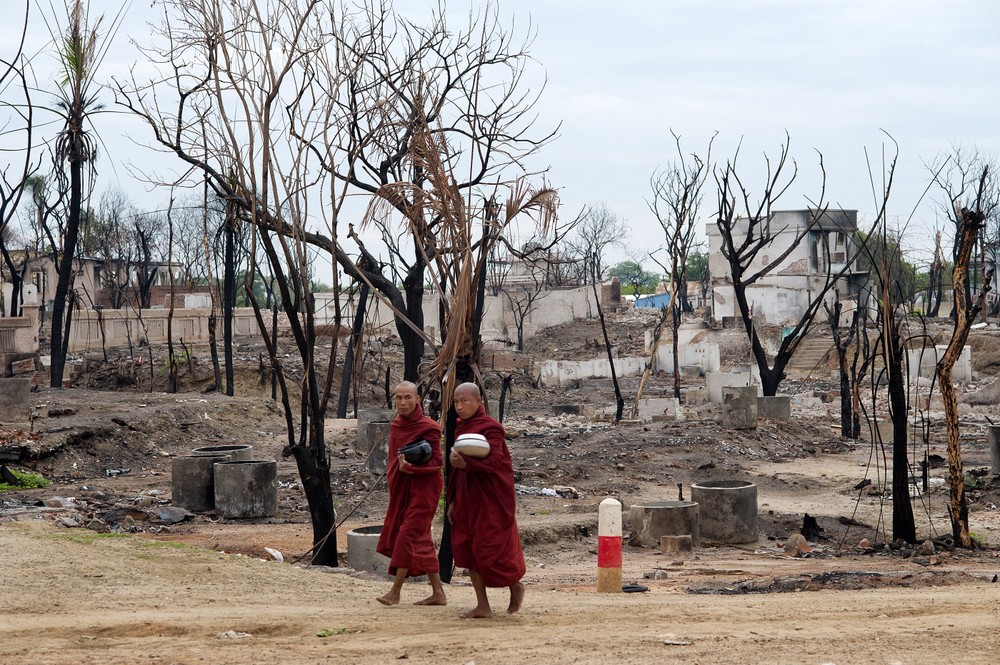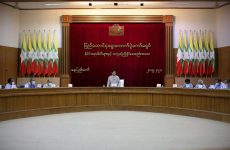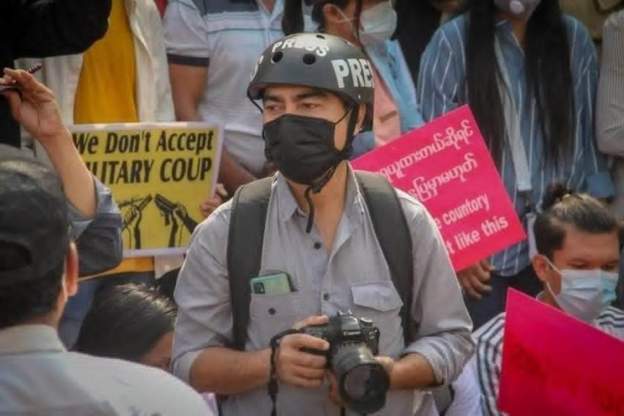M-Media
8th June 2013
Yoon Isaac
In the past few weeks, Muslim communities in various parts of Burma witnessed the increasing numbers of anti-Muslim incident that are largely unreported. The rising number of incidents bag the question if Francis Wade’s prediction about “nationwide religious war” is coming.
Back in 2012 when anti-Muslim violence was mostly confined to Arakan state, Wade’s prediction appeared very unlikely. But his warning has demanded attention since recent violence in Meiktila where people including 28 students were burnt alive. Furthermore, the way of spreading anti-Muslim activities seem to be proving Wade right that the problem is going ‘nationwide’.
Smaller-scale riots and religiously-motivated campaigns are occurring in both major cities in Yangon and Mandalay where Muslims are concentrated, and also in ethnic states where small Muslim populations are scattered.
On June 4, a Hindu man disguised as a Muslim almost caused violence in Tontay in Yangon division. He was a stranger as he newly moved into the neighborhood.
On June 7, strangers in plain cloth approached a mosque on Yangon’s 37th street. They also visited and looked around nearby Muslim shops. According to a local business woman, the strangers visited her aunt’s apartment on the fifth floor. Some took notes.
The Irrawaddy’s Burmese language section also reported similar incident involving two suspicious Buddhist monks who were seeking elm in the evening in Kyautdadar area in downtown Yangon. Traditionally, monks are allowed to eat until noon. Oddly, the monk went to Muslim houses, and eyewitnesses said they were writing notes.
Not only strangers checking mosques and Muslim neighborhoods, incidents of physical violence are also taking place as well, but they are unreported in the media. For example, Htoo Chit, a long time right activist and educator reported on his personal Facebook, that a poor Indian street vender who sells fried yellow peas was beaten up by a group of young people near the country’s famous Yangon University just after dark. Again, that was on June 4, and the man could have been mistaken for a Muslim.
On the next day on June 5, Mandalay’s No. 3 High School almost fell to violence. A group of young people on motorbike parade screamed that Buddhist monks were marching towards the school to burn it down. Parents rushed to the school to take their children home, according to the Irrawaddy. As the news spread, few other schools closed down and some parents run to the schools with swords and sticks. It only appeared to be rumors.
However, according to a Mandalay resident who prefers to remain anonymous, it could have been a planned event which did not happen. There were people already waiting at Patheingyi and Palate, East and South of the city respectively, to rush in if the riot broke out. The riot might have been successfully prevented by the Mandalay Committee to Prevent Violence.
Prior to this incident, anti-Muslim stickers and letters were distributed in Mandalay.
Similar to Yangon and Mandalay, anti-Muslim activities are occurring every couple days in other states and divisions.
A few days before Mandalay incident, a fake monk threatened a Muslim shop owner in downtown Taunggyi, Shan State, that his shop would be attacked. A Buddhist man also shouted aloud in the central market that people buy only at Buddhist shops. Taunggyi residents are in fear that violence will break out one day or another.
In Southern Shan State, extremist 969 monks are staging Buddhist sermons in various towns. According to AP, these sermons take place in areas where there is only tiny Muslim population.
In Karenni state, there was a clash between Muslims and Buddhists at Mawchi mining area on May 27 which cost homes and shops owned by Muslims. The clash was brought under control by Karenni National Solidarity Organization but prompted nine organizations from Karenni State including major armed groups to denounce religiously motivated violence. This is the decisive step that the mainstream Burmese political forces have failed to take.
In Katha, Sagaing division, a mosque was attacked arson. In Myinmu, another town in the division, was almost ruined as a group of people including monks with weapons threatened to attack a Muslim ward called Min Ye Kyaw Zwa. The group could not attack as it was forced to leave the area by local police.
In Irrawaddy division, local 969 team members including monks held a public meeting discussed about boycotting Muslim businesses and banning them from owning land and properties.
In Maduk, Pegu division, a conflict between alleged fish thieves and a Muslim fish pond led to a clash. According to the Voice, it was put under control, but only after costing a few homes and properties owned by Muslims.
In the mean time, rumors about religious clashes are spreading in many towns in central Burma’s Sagain and Magwe divisions. For example, in Aung Lan, Magwe division, people in the town and nearby villages gathered together at the school waiting with weapons to respond to coming attackers, according to the Eleven Media.
All these incidents illustrate that anti-Muslim campaign has gone nationwide, as Francis Wade has warned. But a more accurate characterization, based on the current pattern of anti-Muslim activities, would be persecution than war because hate campaigns and attacks are often one-sided: extremist Buddhists against Muslims.








